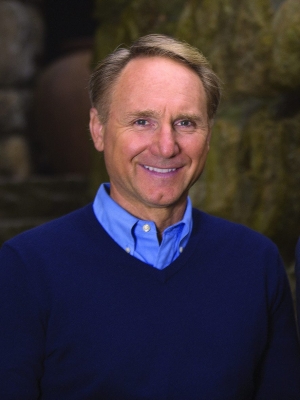
It’s not every day that you hear of an author of adrenaline-fuelled conspiracy novels turning to children’s writing and music. But then Dan Brown always does things differently.
Growing up, he lived on the campus of his school, Phillips Exeter Academy, New Hampshire, where his father Richard taught mathematics. His parents’ decision to not keep a television set in the House forced Brown and his siblings to turn to puzzles and crosswords for entertainment.
Love for riddles
On birthdays and Christmases, the entire family took part in treasure hunts designed by their father. They eagerly pored over riddles and maps to find clues carefully hidden around the house. Racing from one clue to the next, the joy of finally locating their gifts – a shiny new bicycle, a favourite book or a cherished toy – would elicit shrieks of delight.
Besides solving puzzles, Brown enjoyed playing the piano. He was part of the Amherst College Glee Club, which was a singing group. His mother Constance too was a trained church organist. After graduation, Brown decided to become a musician. He produced songs for children – some of them such as Suzuki Elephants and Happy Frog became popular – and later went on to launch his own record company. He even moved to Hollywood to pursue a carrer as a singer-songwriter and pianist, but did not meet with much success.
A thrilling start
Brown took up a job as an English teacher at his alma mater, Phillip Exeter Academy. Reading Sidney Sheldon’s The Doomsday Conspiracy on a lazy vacation inspired him to try his hand at writing a thriller. Tapping into his passion for cryptography and riddles, Brown penned Digital Fortress, a techno-thriller that explores the theme of government surveillance of electronically stored information on the private lives of citizens. Its success led him to quit his job as a teacher and focus on writing full-time. His knowledge of art history and religion helped him come up with The Da Vinci Code, the second book to feature the character of Robert Langdon, a symbology expert. The book became an instant success and is credited with renewing interest in Da Vinci’s work and secret societies, as well as spiking tourism to Paris and Rome. It was adapted into a film in 2006 starring the inimitable Tom Hanks as Langdon.
Changing tack
Brown’s books usually explore the intriguing world of secret societies, saints, deities, poets, architects, code-breakers and symbologists. With a desire to share his love for music and mysteries with kids, he has now forayed into children’s literature. His picture book is wild Symphony, scheduled to release in September. The book is about a mouse who is a musical conductor. Staying true to Brown’s love for codes, the book will include different types of clues and puzzles. Readers can find anagrams that spell a musical instrument when placed in the right order. The book also promises a unique reading experience as it combines reading with music. Using an app on your phone, you will be able to play the right song for every animal.
Giving back
Brown has always acknowledged the role of his alma mater Phillips Exeter in shaping his life. His family makes frequent donations to the school to provide financial support to underprivileged students. In 2004, the family set up the Richard G. Brown Technology Endowment to give computers to children in need.
OH REALLY?
- Have you read Danielle Brown? Dan Brown used this pseudonym to co-author a book with his wife Blythe. It was called 187 Men to Avoid: A Survival Guide for the Romantically Frustrated Woman
- The Chapter 23 in The Da Vinci Code contains some events that are a part of Brown’s childhood. The book jacket even contains puzzles that give hints about its sequel.
- Brown uses inversion therapy – hanging upside down using gravity boots – to get ideas when he experiences writer’s block.
Picture Credit : Google

